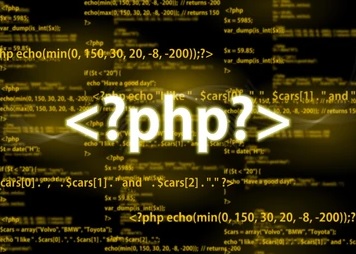
An overview outline of a PHP syllabus designed to teach students from a basic to intermediate level at a computer coaching institute. This structure provides a clear learning path and covers essential PHP topics to build strong foundational skills.
PHP Syllabus Overview (Basic to Intermediate Level)
Module 1: Introduction to PHP
Overview of PHP: What PHP is, how it’s used in web development.
Setting Up a Local Server: Installing and configuring XAMPP or WAMP to run PHP code.
Basic Syntax: Writing and running a PHP script, understanding PHP syntax and structure.
Module 2: Variables and Data Types
Using Variables: Storing and manipulating data.
Data Types: Understanding different types (string, integer, float, boolean, array, object).
Constants: Using fixed values in your code.
Module 3: Operators and Expressions
Arithmetic, Comparison, and Logical Operators: Performing calculations and comparisons.
String Operators: Working with text and combining strings.
Module 4: Control Structures
Conditional Statements: Making decisions using if, else, and switch.
Loops: Repeating actions with for, while, do-while, and for each loops.
Module 5: Functions
Creating Functions: Writing reusable code blocks.
Parameters and Return Values: Passing data to functions and receiving results.
Built-in Functions: Using common functions for strings, numbers, and dates.
Module 6: Working with Forms
Handling Form Data: Creating HTML forms and retrieving data with GET and POST.
Form Validation: Checking user input for accuracy and security.
Module 7: Arrays and Superglobals
Types of Arrays: Indexed, associative, and multidimensional arrays.
Array Functions: Sorting, merging, and counting elements.
Superglobals: Using $_GET, $_POST, $_SESSION, $_COOKIE.
Module 8: String Manipulation and Regular Expressions
String Functions: Common operations for handling text.
Regular Expressions: Pattern matching for validating data (e.g., email, phone numbers).
Module 9: File Handling
Reading and Writing Files: Basic file operations.
File Uploads: Uploading and handling files via forms.
Module 10: Error Handling and Debugging
Error Types: Notices, warnings, and fatal errors.
Error Handling Techniques: Using try, catch, and custom error handling.
Module 11: Basic Object-Oriented Programming (OOP)
Introduction to OOP: Basic concepts like classes, objects, and methods.
Creating Classes and Objects: Defining and using classes.
Inheritance and Access Modifiers: Code reuse and controlling access with public, protected, private.
Module 12: Working with Databases (MySQL)
Database Basics: Introduction to MySQL and SQL.
Connecting to a Database: Using PHP to connect to MySQL.
CRUD Operations: Performing Create, Read, Update, and Delete operations.
Prepared Statements: Protecting against SQL injection.
Module 13: Session Management and Cookies
Using Sessions: Maintaining user data across pages.
Using Cookies: Storing data on the client side for user preferences and tracking.
Module 14: Security Essentials
Data Security: Validating and sanitizing inputs to protect against attacks.
Preventing SQL Injection and XSS: Using secure coding techniques.
Module 15: Building a Basic Project
Planning a Small Application: Structuring a simple project like a contact form or a to-do list.
Applying PHP Concepts: Using CRUD, sessions, and form handling in a real project.
Testing and Debugging: Reviewing the project for errors and usability.
Assessment and Evaluation
Assignments: Weekly tasks to apply module concepts.
Quizzes and Exams: Testing theoretical and practical knowledge.
Final Project: A mini-project to demonstrate PHP skills and understanding.
This syllabus overview introduces students to PHP essentials, progressively covering topics from basic syntax to database interactions, error handling, and security, providing a well-rounded education in PHP at a coaching institute level.